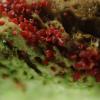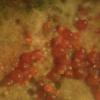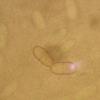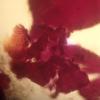
03-09-2013 14:51
John LeachHello all I found what I first thought was a Chlo

17-09-2013 18:15
 Nicolas VAN VOOREN
Nicolas VAN VOOREN
Bonsoir.Je cherche l'article suivant :Thind K.S. &

11-09-2013 18:52
 Nicolas VAN VOOREN
Nicolas VAN VOOREN
Bonjour.Savez-vous si l'ouvrage de V. Picco, Melet

10-02-2013 12:45
Nina FilippovaUsing the key by Nauta, Spooner (1999) i have come

16-09-2013 17:55
Nina FilippovaGood time to everybody).I have mentioned earlier t

16-09-2013 23:48
Dear all,Have you already observed little apical
Nectria or related on moose bone
Edvin Johannesen,
17-08-2020 16:18

This one was collected on dried bone remnants of a dead moose (presumably). Perithecia only ca. 0.2 mm or less. Collapsing from the top upon drying into a cup-like shape. Spores 8-9 x 4-5 microns, slightly constricted at the septum. Spores appearing pale brownish in transmitted light. No striation visible in cotton blue.
Is the substrate just a coincidence or are any Nectriaceous species know to occur on such a substrate?
Thanks.
Christian Lechat,
17-08-2020 20:18

Re : Nectria or related on moose bone
Hi Edvin,
did you test changing coulour in KOH or lactic acid?
Christian
Edvin Johannesen,
17-08-2020 21:45

Re : Nectria or related on moose bone
Hi Christian,
No, I didn't. I could test with KOH. What colour changes?
Edvin
Christian Lechat,
18-08-2020 08:18

Re : Nectria or related on moose bone
if there is a colour change, the ascomata may turn purple in KOH and yellow to orange in lactic acid.
Christian
Edvin Johannesen,
18-08-2020 11:56
Christian Lechat,
18-08-2020 17:48

Re : Nectria or related on moose bone
Dear Edvin,
I think your fungus is not Nectria ss. str., which has verrucose ascomata crowded on a well developped stroma.
The change of colour do not allow to know the genus but only that your fungus belongs to Nectriaceae, while the species which do not change belong to the bionectriaceae.
To know the genus you have to know its asexual morph. Check if the asexual morph is associated to ascomata of your specimen, if not the case, you have to culture it to know what it is.
Good luck
Christian
The change of colour do not allow to know the genus but only that your fungus belongs to Nectriaceae, while the species which do not change belong to the bionectriaceae.
To know the genus you have to know its asexual morph. Check if the asexual morph is associated to ascomata of your specimen, if not the case, you have to culture it to know what it is.
Good luck
Christian
Edvin Johannesen,
18-08-2020 20:24

Re : Nectria or related on moose bone
Thanks Christian. I have to recap the "new" systematics of nectriaceous ascomycetes. Unfortunately I don't see an anamorph associated with the ascomata.






